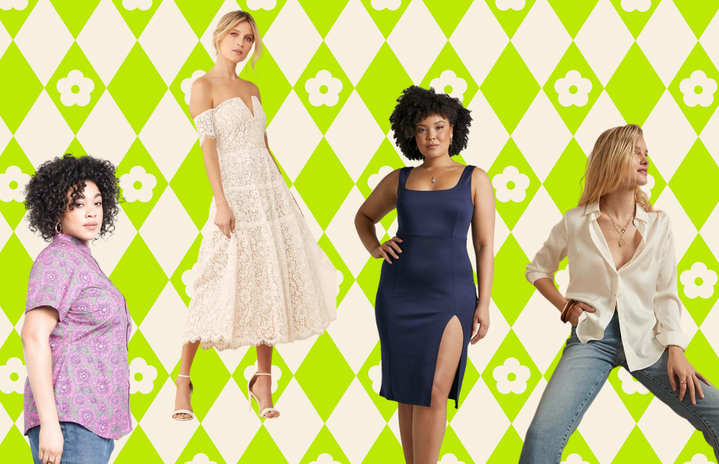I was going for a Coquette look, but my blush isn’t Cold-Girl enough, I don’t think.
She’s so Clean Girl core, I wish I wasn’t so Gremlin core.
Her Instagram is so cute–I just know she’s cool in real life.
When was the last time you saw a social media influencer who didn’t prescribe to a singular aesthetic? Someone who wasn’t a girly girl, or who always sported GymShark leggings, or who was so “skater-girl core” she might as well be Tony Hawk?
For me, it’s been a while. Barring Gen Z fashion icons like Emma Chamberlain, who has ascended the influencer status, it seems as if every popular female content creator on social media is stuck on a singular “aesthetic”–whether she is a dark academic or a granola girl, an E-girl or a coastal grandma.
This phenomenon of having a singular aesthetic, whether for years or switching every few months, has trickled down into the average Gen Z woman as well. As if judging a book by its cover wasn’t a problem pre-social media, you can now glance at a pair of Lululemon leggings and assume the girl next to you on the bus is a “fitness girly”. You can glance at some Blundstone boots walking in front of you on the way to the library and know that a girl is “granola”–maybe if she’s wearing the right jewelry, she’s “salted granola”.
Didn’t women just escape the “one-note, one vibe, one interest” narrative that’s been placed on us for years?
Aesthetic, which used to be universally defined as “concerned with beauty or the appreciation of beauty”, has become a weapon against women and their right to just be. While this may sound a bit dramatic, it’s a deep-cutting issue–and it’s affecting how we see others, our interactions with the economy, and our perceptions of ourselves.
Aesthetic Personalities
We are starting to associate different aesthetics with different personalities, and this is doing all women a disservice.
Fashion can be a powerful form of expression when used freely. But when you force expression within a specific set of boundaries, you’re reduced to one expression. That’s it. And no woman only has one expression.
Because of this, we’ve started to see mismatches between what we see a woman is perceived as, and what she might actually be.
I’ve long been a granola dresser. I’ve been wearing Chacos and flannels since my early teenage years; braids and a beanie can be spotted on my head pretty much 24/7 in the wintertime. This style reflected on my Instagram feed for a while, too: I only posted (sometimes consciously, sometimes unconsciously) images of myself in nature, on a mountain, in a lake, in the woods.
I was completely okay with presenting myself in this way, and having people perceive me this way until I studied abroad in Switzerland, and suddenly found myself in a professional setting more than on a mountain trail. Thus, out of necessity and requirement, I started veering towards neutrals and more business-casual outfits. Now that I’m home from Switzerland, I’m wearing a weird combination of my old granola style and the slick and elevated, neutrals-only style of Western Europe.
Both transitions had me questioning how I was perceived. When I wear a flannel and ripped jeans, I know people don’t see me as the polished and confident academic I am. When I dress in black jeans and a gray trench coat, with a white blouse neatly tucked underneath, I know people don’t see me as the woman that loves to hike and swim and ski–the woman I still am underneath.
The problem with aesthetics is that their prevalence in our society doesn’t allow me to be both versions of myself at the same time; I can’t be layered, at least not at first glance. I’m not as easygoing, stoner-coded as the granola girls on Instagram, nor as career-oriented, or city-loving, as elevated dressers on Pinterest. This realization sent me into a bit of a personality crisis because I felt I had to choose one. Why does every other girl seem to know which aesthetic is more ‘her’?
Yet, every woman I know is layered. Not every “soft, girly, coquette girl” I know is demure and sweet. Not every “skater, athletic, thrifty girl” is bold and confident. But we can’t help but assume a woman’s personality when we see her emulate the style-based personalities we’ve come to know online.
Never in history have women only had one, defining, end-all-be-all personality trait. So why are we trying to start now?
Aesthetic Consumption
I might be beating a dead horse here, but I must because this horse is harming our environment and fellow humans; when new aesthetics are created monthly, and women see that aesthetic as something we want to emulate, we’re going to shop more. We’re going to throw out more, too.
Remember the age of the “VSCO girl”: when scrunchies and oversized tees were all the rage, and Crocs were flying off the shelf? Not only did it force thousands of girls into one archetype–one of a gossiping, happy, but one-dimensional teen–but it also forced thousands of girls into department stores to find items that just screamed “sksksksks”.
The millions of scrunchies sold, and discarded when the VSCO aesthetic started to dry out in 2021, didn’t just disappear. They’re still out there. They will be after you die. The claw clips will be, too.
The aesthetics phenomenon has created a monster within a monster. The trend cycle is faster than ever, but the hundreds of aesthetics out there make it possible to speed it up even more if you want to. Getting bored by the coquette style? Find a TikTok telling you the ten clothing items every Y2K girl needs. Feel Y2K style clashing with your actual personality? Head to J Crew to try out coastal grandma. Wash, rinse, repeat. Consume at all costs.
Even if you’re thrifting (and I am no saint, mind you), you could still be overconsuming by seeking a specific aesthetic. Which makes you unhappy. Once you find a style that suits you, and not just on a girl who you thought looked cool online, you might find yourself spending less on clothing items that don’t reflect your personality, and will end up in a donation pile three months later.
Aesthetic Comparison
When you’re constantly vying to be like the granola girl you follow on Instagram, you are setting yourself up for self-esteem issues. I guarantee you, the granola girl on Instagram is not even granola enough to fulfill the requirements we’ve forced on ourselves–the fact that she’s constantly on her phone creating content while in nature would be one hint. Nevertheless, while we’re aspiring to present ourselves as a made-up, imaginary, idealized woman– and not ourselves at our most confident and real– it’s not going to end well.
And that’s simplified. Throw in the socioeconomic, racial, and body-centric layers of our society, and it gets a lot worse. You’d be hard-pressed to find a “clean girl” on Instagram who’s not white and skinny. It’s hard to find a coastal grandma look that won’t put a dent in your paycheck. There are sociological barriers to becoming these girls we want to be–as if there weren’t impossible standards already.
I’m not saying you can’t follow trends–I still do. But it pains me to see women willingly reduce themselves to one look because social media has made that the norm. I know the disconnect it can create, I know the constant state of envy it produces–I thought I was soft girly girl enough, but this TikToker is doing it so much better.
Wear what you want, even if it isn’t aesthetically what you wore yesterday. You are so much more than an OOTD captioned #cleangirl. Even Elle Woods didn’t wear pink every day.


